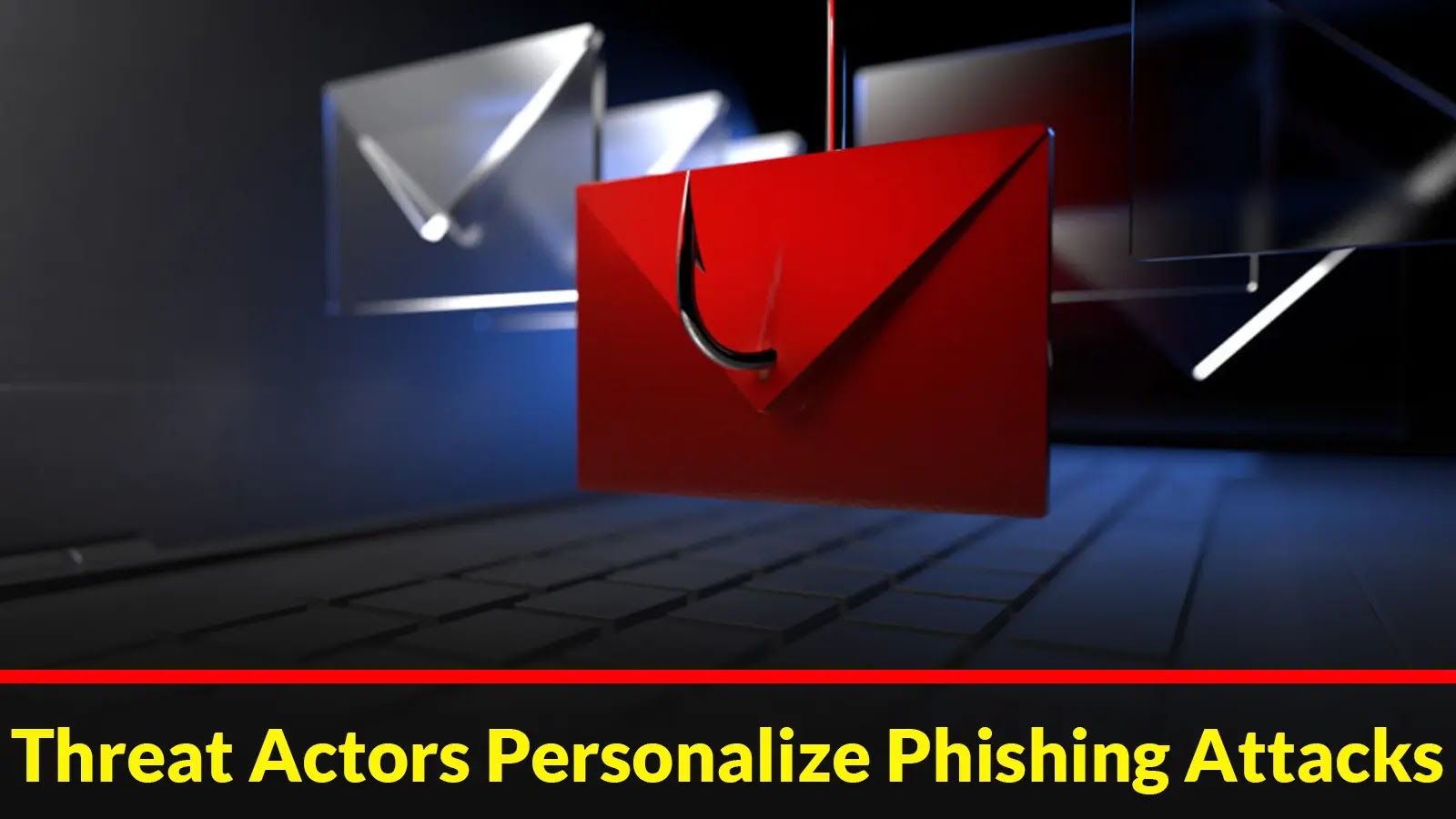
Threat Actors Personalize Phishing Attacks With Advanced Tactics for Malware Delivery
The cybersecurity landscape currently faces a pressing threat: highly personalized phishing attacks. Gone are the days of simplistic, easily detectable bulk emails. Threat actors are now leveraging sophisticated social engineering tactics, creating a false sense of authenticity and urgency that significantly enhances the effectiveness of their malware delivery campaigns. This evolution demands a deeper understanding and a more robust defense strategy from all organizations and individuals.
The Evolution of Personalized Phishing Attacks
Cybercriminals are no longer relying on generic, copy-pasted phishing templates. Instead, they are meticulously crafting emails that resonate directly with their intended victims. This shift involves tailoring various elements of a phishing attempt to appear legitimate and highly relevant. Key personalization tactics include:
- Customized Subject Lines: Attackers often incorporate internal project names, recipient names, or recent business activities into subject lines, making the email seem like a genuine communication from a known entity.
- Tailored Attachment Names: Files are named to mimic legitimate documents, such as “Q4_Financial_Report.pdf” or “Project_X_Proposal.docx,” often aligning with the recipient’s role or industry.
- Contextual Embedded Links: Phishing links are disguised to appear as legitimate internal resources or well-known cloud storage services, often leading to credential harvesting pages or direct malware downloads.
- Exploiting Publicly Available Information: Threat actors meticulously scour social media, corporate websites, and public records to gather information about their targets, which is then woven into the email’s narrative to increase its perceived legitimacy. This makes it harder for individuals to discern these attacks from genuine communications.
This level of precision significantly lowers the guard of even security-aware individuals, making these personalized attacks more potent and successful.
Advanced Tactics for Malware Delivery
Beyond personalization, the methods for delivering malware have also grown more sophisticated. Attackers are exploiting known vulnerabilities and employing advanced obfuscation techniques to bypass traditional security controls.
- Zero-Day and N-Day Exploits: While not exclusively tied to personalized phishing, these campaigns increasingly leverage unpatched vulnerabilities. For example, a personalized email might contain a malicious document exploiting a recently discovered flaw in common software, such as CVE-2023-xxxx (placeholder, as no specific CVE was provided in the source) in a popular office suite, leading to remote code execution. Security teams must stay vigilant and patch promptly. Information on such vulnerabilities can be found on the official CVE database.
- Polymorphic Malware: To evade signature-based detection, malware is often designed to change its code or appearance with each infection, making it challenging for antivirus software to identify.
- Steganography and Obfuscation: Malicious code can be hidden within seemingly innocuous files (like images or legitimate documents) or heavily obfuscated to avoid detection by security scanners.
- Credential Harvesting Impersonation: Phishing links frequently lead to meticulously crafted fake login pages that mimic legitimate services (e.g., Microsoft 365, Google Workspace, internal VPN portals), designed to steal user credentials.
The convergence of personalized social engineering and advanced malware delivery mechanisms represents a significant challenge for cybersecurity defenses.
Remediation Actions and Proactive Defense
Mitigating the risk posed by personalized phishing attacks requires a multi-layered approach that combines technological solutions with robust human training.
- Employee Security Awareness Training: Regular, interactive training sessions that include real-world examples of personalized phishing attacks are crucial. Employees must be educated on how to identify suspicious emails, verify sender identities, and report potential threats. Emphasis should be placed on vigilance regarding unexpected emails, even if they appear to come from known contacts.
- Email Filtering and Anti-Phishing Solutions: Implement advanced email security gateways that utilize AI and machine learning to detect and block sophisticated phishing attempts, including those with personalized elements. These solutions should analyze email headers, content, sender reputation, and embedded links.
- Multi-Factor Authentication (MFA): Enforce MFA across all critical systems and applications. Even if credentials are compromised through a personalized phishing attack, MFA provides an essential second layer of defense, preventing unauthorized access.
- Endpoint Detection and Response (EDR) Solutions: Deploy EDR tools that can detect and respond to malicious activity on endpoints, even if the initial phishing email bypasses email filters. EDR can identify suspicious processes, network connections, and file modifications indicative of malware infection.
- Regular Patching and Vulnerability Management: Maintain a rigorous patching schedule for all software, operating systems, and network devices to close known security gaps that attackers might exploit. Conduct regular vulnerability assessments and penetration testing.
- Incident Response Plan: Develop and regularly test a comprehensive incident response plan for phishing and malware incidents. This plan should outline steps for identification, containment, eradication, recovery, and post-incident analysis.
Tools for Detection and Mitigation
Leveraging the right tools is essential in building a resilient defense against personalized phishing campaigns.
| Tool Name | Purpose | Link |
|---|---|---|
| Proofpoint / Mimecast | Advanced email security and anti-phishing platforms | https://www.proofpoint.com / https://www.mimecast.com |
| SentinelOne / CrowdStrike | Endpoint Detection and Response (EDR) solutions | https://www.sentinelone.com / https://www.crowdstrike.com |
| KnowBe4 / Cofense | Security awareness training and phishing simulation platforms | https://www.knowbe4.com / https://cofense.com |
| Tenable.io / Qualys | Vulnerability management and scanning solutions | https://www.tenable.com / https://www.qualys.com |
| Microsoft Defender for Office 365 | Integrated email security for Microsoft 365 environments | https://www.microsoft.com/en-us/security/business/microsoft-365-defender/office-365 |
Conclusion
The increasing sophistication of personalized phishing attacks, utilizing advanced tactics for malware delivery, signifies a critical shift in the cyber threat landscape. Organizations must recognize that these are not merely technical issues but deeply rooted social engineering challenges. A robust defense strategy requires a holistic approach that blends cutting-edge technology, continuous employee education, and a proactive posture towards vulnerability management. By staying informed, implementing comprehensive security measures, and fostering a security-aware culture, organizations can significantly reduce their susceptibility to these evolving and dangerous threats.





